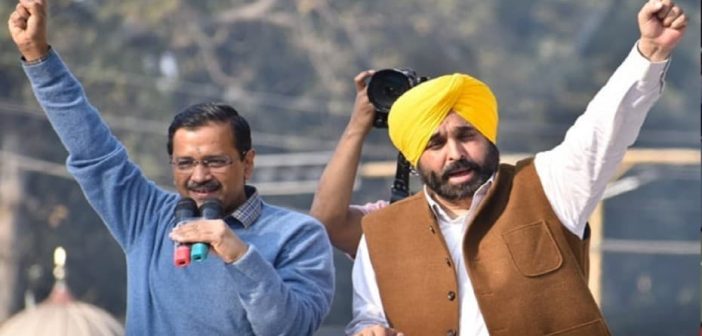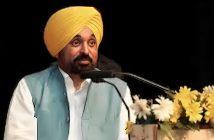In Punjab, where a hardened two-party system is being challenged by a new entrant — the Aam Aadmi Party (AAP) made it a three-cornered contest in 2017 — and where more players, including sections of a spectacularly successful farmers’ movement, crowd the fray, that’s also the choice, and clash.
If voting is an exercise of power to bring change, it can also become muscle memory in a democracy. In Punjab, where a hardened two-party system is being challenged by a new entrant — the Aam Aadmi Party (AAP) made it a three-cornered contest in 2017 — and where more players, including sections of a spectacularly successful farmers’ movement, crowd the fray, that’s also the choice, and clash.
Change vs Memory. Change vs Habit.
Both “change” and “memory” are many-sided things in the home of the long-plateaued Green Revolution — a state which, after great abundance, has seen a steep decline. Change, especially, has several built-in cynicisms and disbeliefs in Punjab. In Election 2022, however, it has only one claimant, and one possible beneficiary.
This is unlike in 2017 when the Congress, under a till-then larger-than-life Captain Amarinder Singh, ended up capturing most of the vote against the two-term Shiromani Akali Dal-led regime, with the AAP trailing way behind. At that time, even after a campaign that created the most ripples, the AAP had to content itself with only 20 seats in a House of 117.
Today, In Punjab, with the farmers’ morcha’s electoral debut a non-starter, everyone else is an incumbent against challenger AAP.
Amarinder Singh, Chief Minister until three months ago, a dramatically diminished figure, his newly floated Punjab Lok Congress party a faceless junior partner of the BJP, is seen to have whiled away his “saade char saal (four and a half years)” in power. Charanjit Singh Channi is also being judged, though much less harshly, and in pockets even favourably, for his government of “ik sau gyarah din” or 111 days.
Though the SAD is five years out of power, the sentiments against the “rivayati (traditional)” parties stoked by the over a year-long farmers’ movement, have ensured that Sukhbir Badal’s party is also seen, even by supporters, more as the upholder of the old order. All the non-AAP parties are clubbed together in the popular refrain of “sattar saal (70 years)” vs the AAP.
Travel through Punjab
Days before polling, and you can see both the palpable impulse for change, and the hurdles in its way. What also seems clear is this: Only the AAP, riding on the back of the desire for a political alternative, and armed with the “Delhi model”, is on the upswing, despite its constraints. For the Congress and SAD, success will lie in holding on to what they have — enough to ensure that, in a triangular contest, the AAP is contained.
In Malwa, the clamour for change, far more articulate and louder than in the other two regions, is made of a litany of entangled crises. For one, the school that is slow to reopen after shutting down in the pandemic — the school that, even when open, is only the stepping stone to the children’s flight to foreign shores.
“Theke khulle hain, school band hain”, says grey-bearded Gurmail Singh, a farmer in Dhaula village, which falls in Channi’s constituency of Bhadaur. He was a Congress supporter, he says — not anymore. “Jo padh gaye, o baharle mulk vich… (the kids who studied, went abroad). Buddhe kalle rah gaye (the old are left here alone). When we die, who will perform our last rites?”
In the Ravidassi (SC) mohalla of Balad Kalan, about 40 km from Bhagwant Mann’s constituency of Dhuri in Sangrur, young housewife, Arshdeep Kaur, is despairing: “I have a three-year-old who should be in school… He will grow up into these young men you see in our mohalla, all loitering, all unemployed. There are no opportunities. Those who are in the village, remain in the village”.
Punjab’s drug problem now has a popular name —
“chitta”, the notorious synthetic drug cocktail. In Mudki kasba of Ferozepur, Jarnail Singh, who earlier voted SAD, laments: “If we want to buy sugar, it takes time, it is quicker to get chitta. It came via the SAD government. Congress’s Captain swore on the Gutka Sahib to eradicate it and then did nothing”. At a deaddiction centre in Sangrur town, project director Mohan Sharma says that between 2005 and 2021, the number of patients who come into the centre has increased from about 3 to 6-10 daily.
Even in Malwa, and much more in the Majha and Doaba regions, however, the call for change comes up against constraints. Many point out how a significant number got the AAP ticket after they failed to get one in the Congress or SAD. Eleven of AAP’s 20 MLAs deserted it after 2017, and three of its four MPs. The party is seen to have borrowed and stolen from others, failed to hold on to its own.
More importantly, in the rural areas of an overwhelmingly rural state where the SAD and Congress have long established village-level factions or “dharhas”, the AAP is yet to fully form or strengthen its own local networks of patronage. It is still to penetrate the rural power system in which the sarpanch plays a key role.
The party in power, presently the Congress, has an outsized influence in the election of the sarpanch, often by sheer “dhakka” or force. At the same time, important “links” at the level of thana, tehsil and court, are maintained and leveraged by the sarpanch of the party that was ousted from power, presently the SAD.
Village Pindi In Gurdaspur
No wonder then that in village Pindi in Gurdaspur district of Majha, traditionally the Panthic belt, swept by the Congress in 2017, Manpreet Singh, a daily wage labourer, says he has put both the SAD and Congress flags atop his house — “because I don’t want to rub either one of them them the wrong way”. He doesn’t feel the need to fly the AAP flag, he says. “Because there is no AAP worker here, no one to offend”.
Of course, though it may not be visible in Pindi, the AAP has made visible strides even in Majha and Doaba since 2017. In Majha’s Mulowali village, young Sukhmandeep Singh expresses a mathematical anomaly which nevertheless gives a sense of the AAP’s rise in new terrain: “In our halka (constituency), the SAD, Congress, AAP have a chance of 50, 50, and 25 per cent respectively”.
If the main question in Malwa is whether the AAP can build on its momentum on the back of a widely shared sense of crisis, in Majha and Doaba, where it has been late in coming and where the clamour for change is fainter, the question will be this: Can it pierce the established infrastructure of power the older parties have put in place?
But if the AAP still lacks a grip on the architecture of power in the Punjab village, it has a firm hold on the “Delhi model”. If Narendra Modi successfully promoted his “Gujarat model” in other states, Arvind Kejriwal has done something similar for Delhi in Punjab.
Across the three regions, voters talk of the AAP government’s “achievements” in Delhi —
From the revamped school and hospital to subsidised power, and ask: “If it weren’t true, why would AAP have been voted back to power in Delhi?” For many,
AAP’s perceived commitment to education and health infrastructure is more attractive than the AAP freebie. “We need jobs, not free atta and dal”, says Dharambir Singh, a driver in village Chehla in Samrala constituency.
For the most part, there is a “change vote” in Punjab, made of both hope and despair, and the AAP is its only suitor.
The contest in Punjab is between this surge of hope-despair and the power of the Congress and SAD to keep it in check.




